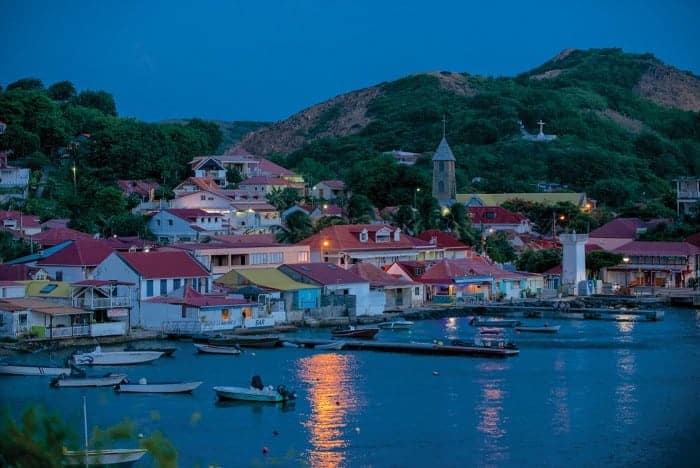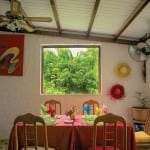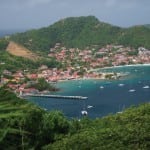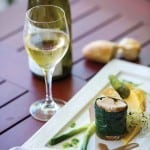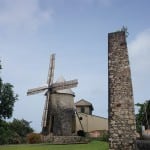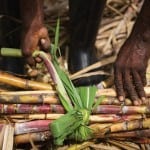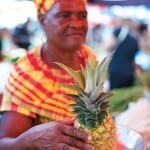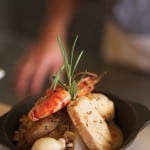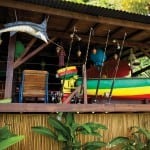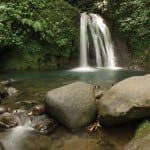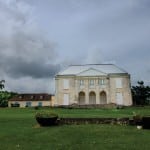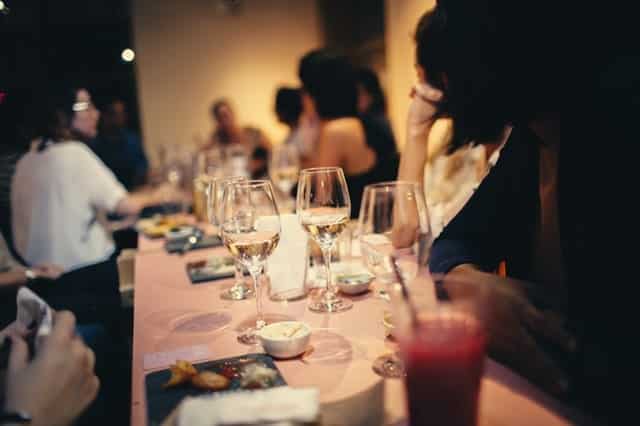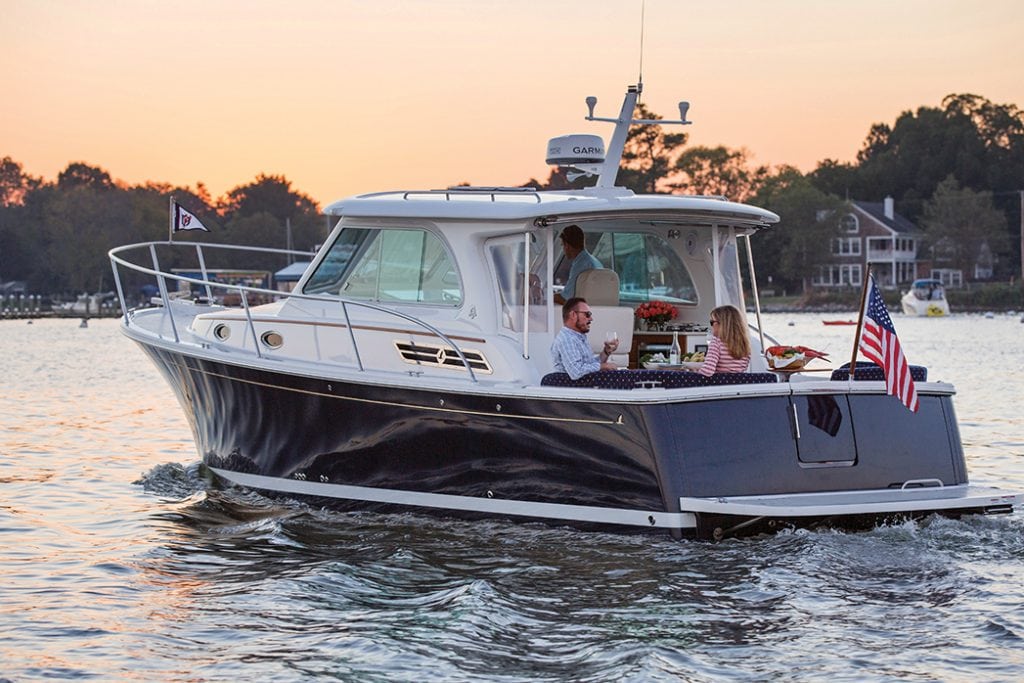Picturesque villages welcome and authentic French-Caribbean cuisine lures explorers to this French West Indies island gem.
Once known to local Indians as “Karukera” (the islands of beautiful waters), Guadeloupe, the largest of the Lesser Antilles, offers a wonderful and compact microcosm of the rest of the more familiar French West Indies. Cruise among the five main islands—and a dozen smaller ones—halfway between Antigua and Dominica, and you’ll discover chic cafes and hidden beaches to rival St. Barts, a boisterous spirit that outdoes fun-loving St. Martin, and a brooding volcanic beauty wilder than Martinique.
While Guadeloupe is officially part of France and the Euro is the currency of the realm, English is not as widely spoken here as it is in her sister islands—asking someone if they speak English will be greeted with a cold look. But learn the phrase “je parle un peu francais” (I speak a little French), and, true or not, you’ll be greeted with smiles and earnest attempts to communicate. July is a great time to visit and is when locals hoist sails for a nine-day race around the archipelago in traditional sailboats.
The Guadeloupe “mainland” is really two sister islands separated by the Salty River. On a chart, the islands look like the wings of a butterfly. Grand Terre (big land) is the wing to the northeast, a relatively low island and home to Pointe-a-Pitre, Guadeloupe’s largest city, busiest port and the commercial heart of the island. Base yourself out of the Bas-du-Fort marina located just over a mile south of the commercial port. It’s packed with restaurants and shops, and you can explore the southern coast and its string of seaside towns. Gosier—just over three miles from the marina and where most of the luxury resorts are based—has a fun night market and well-lit Datcha Beach for an evening dip. Sainte Anne—another 10 miles further east—boasts a beautiful seafront promenade and one of the island’s prettiest and busiest white-sand beaches.
Due west across the Salty River near Pointe-A-Pitre is the rugged island of Basse Terre, the southwest “wing” of the butterfly. The island is home to the namesake capital Basse Terre town in the shadow of Soufriere, the island’s tallest volcano. Most cruisers will head further north to the Jacques Cousteau Marine Reserve near Pigeon Island—divers can hunt for his bust down around 40 feet. Another 10-mile leg will get you to Deshaies Bay, a well-protected and scenic harbor. The waterfront is packed with fine restaurants and shops and locally is famous as the tropical setting for the British detective series Death in Paradise.
Just over six miles south of the mainland are the smallest, but the most picturesque and cruiser-friendly of the islands, the lovely Les Saintes (a miniature archipelago). These eight, knobby islands were the backdrop of a ferocious four-day naval battle in 1782. The Royal British fleet pounded and then hounded 35 of France’s best ships, ultimately turning back a planned French and Spanish invasion of Jamaica. While the debate still lingers, the engagement is credited with being where the British tactic of “breaking the line” was developed—sailing right through the enemy’s guns to rout them from behind—though wind conditions may have been more responsible.
Today, except for the ridge-top ramparts of Fort Napoleon guarding the bay of Terre de Haut (the main island) and the locals’ stories of booming cannon shots on moonless nights, the ghosts of war are quiet, and one of the bloodiest naval battlefields in the Caribbean is now one of the most beautiful—UNESCO has officially designated Les Saintes Bay among the world’s most beautiful bays.
The fishing village of Le Bourg is the center of cruising culture in Les Saintes, and yachts and sailboats from all corners of the Caribbean, Latin America and the U.S. moor offshore in a bay sheltered by Goat Island, once a penal colony and way station for prisoners bound for the notorious Devil’s Island off French Guiana. The village is easily walkable and soaked in French Creole ambience—gingerbread houses spill with bougainvillea. Women dressed in traditional fire-colored Madras sell “torment d’amour” (delicious pineapple- and guava-stuffed pastries) from wicker baskets, while bare-chested fishermen in straw hats carry tuna from the dock.
A 20-minute walk—or five-minute ride in an electric car—from town along a narrow road brings you to Fort Napoleon and its impressive museum and some of the best views of the bay. More ambitious hikers can attempt The Hat—the highest point on the island—for the most panoramic views. The Hat is only a mile southwest of town as the crow flies but a steep one-hour, two-mile walk up a closed-off road, switched back road. Go early in the morning and, except for a herd of wild goats, you’ll have the summit all to yourself.
Beyond the pure beauty of the Les Saintes, cruisers are drawn by the superb cuisine. No fewer than 30 restaurants can be found in and around Le Bourg. A few minutes’ walk from the main pier is Ti Kaz La (Little House). The restaurant, owned by Philippe Dade (a former Four Seasons chef) mixes local Creole dishes—accra and octopus, which tend to be heavier—with the lighter cuisine and desserts of Metropole, France. Not surprisingly, the seafood is fresh and the wine selection is straight from Paris—the open-air dining room looks right out on the bay.
Les Saintes has plenty of pretty and secluded beaches. Run your dinghy about a mile due west of the pier—out around the prominent Sugarloaf Point—and tuck into the namesake beach, a very private, palm-shaded strand with a small wooden pier. The water is so clear you can see old landslide debris more than 30 feet down. A potentially rougher ride takes you around the south side of the island—keep your rod ready for schooling tuna as flocks of terns will point out the boiling bait balls—to Pompiere Beach on the Atlantic side. The pretty bay, also an easy walk from town, has a grove of tall coconut palms. The beach itself is soft brown sand and is fairly sheltered from the open ocean by a row of rocky islets.
“Authentique” is the word Guadeloupians use to describe Marie Galante, an island 16 miles south of Grand Terre and only slightly smaller than Martha’s Vineyard. Marie Galante even has an off-season Vineyard feel to it—small country estates are tucked among the rolling fields and empty roads. The main town, Grand Bourg, offers a small harbor and is where the inter-island ferries also dock. Nearby is the 18th-century Murat Plantation and museum. The main house sits on a hill overlooking the limestone shell of the old distillery and the ruins of a windmill. Hidden among the flamboyant trees are the rusting artifacts of the sugar age, massive iron kettles overgrown by flowers. Beyond a traditional Creole garden is a haunting reconstruction of the mud-and-wattle slave quarters. For a more personal glimpse of the past, ask around the ferry dock for Alex Brute, a farmer and sometimes cab driver who takes tourists out to his sugar cane fields in “the world’s first SUV”—a traditional bull cart drawn by Shiny and Sonya.
Locals swear the beaches are the prettiest in the archipelago, and they’re easily among the least crowded. Vieux Fort Beach is narrow and steep and has pillow-soft sand—the coconut trees far outnumber any beachgoers. Even more remote pocket beaches can be found by sailing along the wilder northeast coast where, on a clear day, you can gaze longingly at the distant shores of La Desirade, a narrow ridge of land 22 miles north, another island left for another journey.
Words & Photos By Jad Davenport, Southern Boating April 2015


